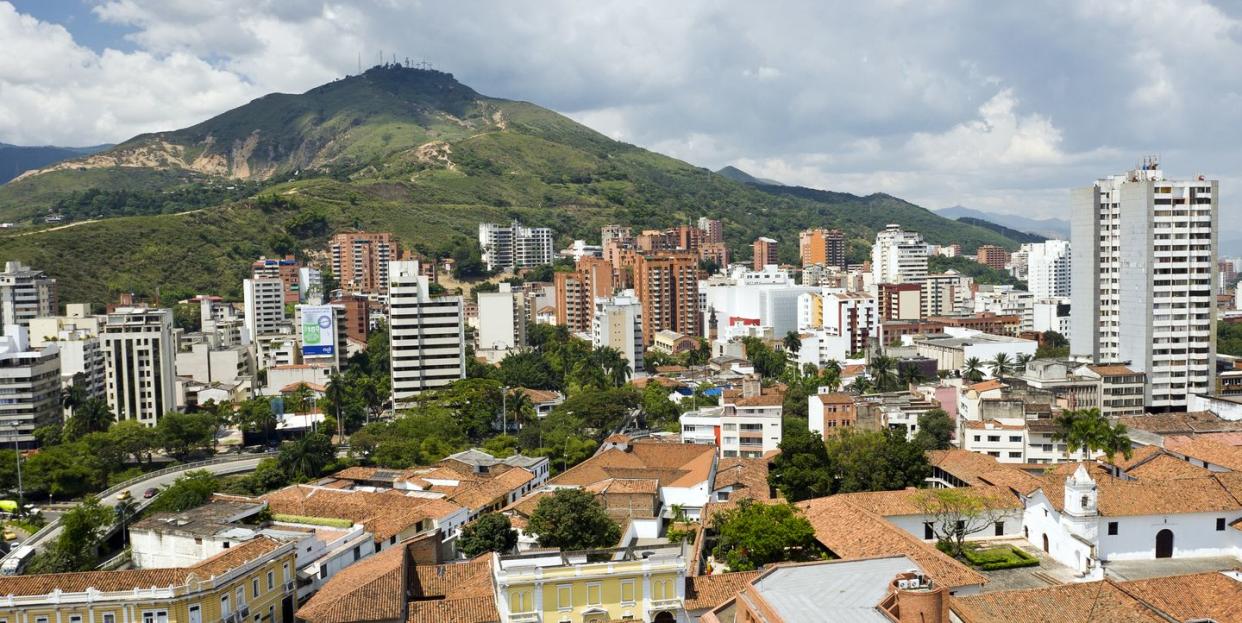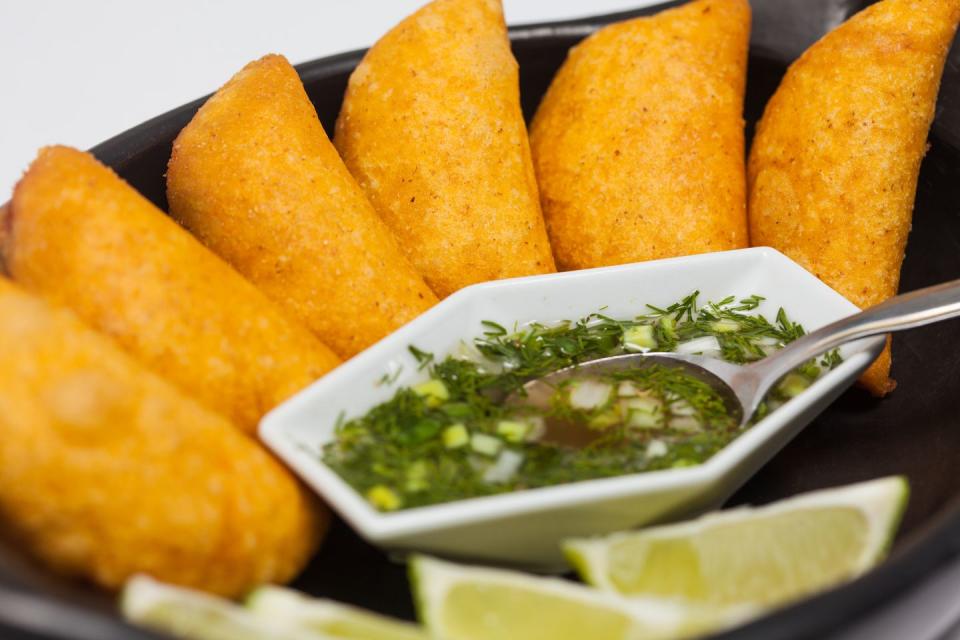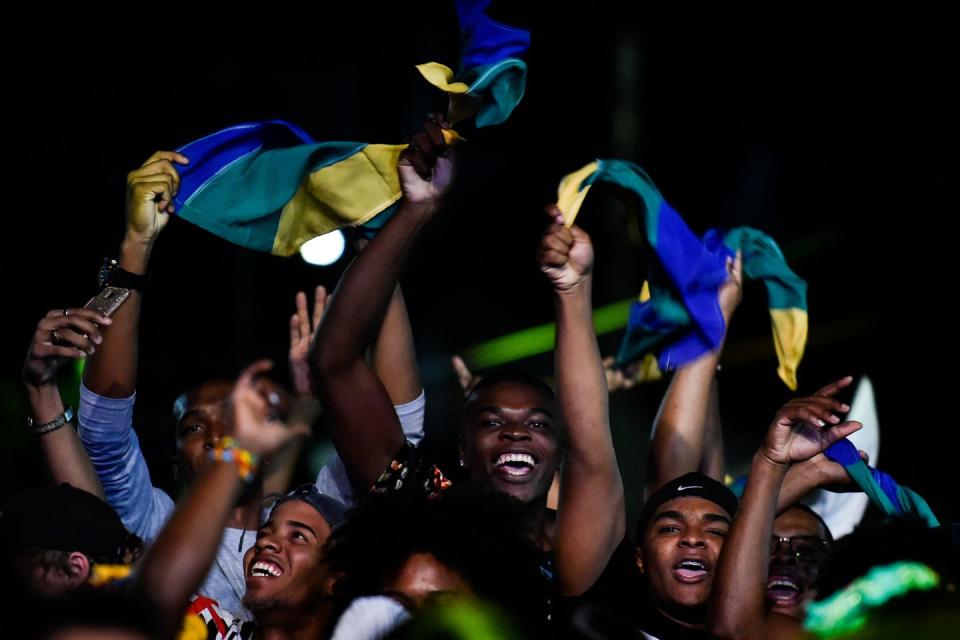The T&C Guide To Eating And Drinking Your Way Through Cali, Colombia

For foodies with a sense of adventure, Cali, Colombia ticks a lot of boxes. That’s probably why the world’s Salsa dancing capital recently became the first South American city named to the French foodie network Delice.
Street food is often one of the best parts of traveling. For Cali street food, don’t miss the Galeria Alameda market, with stalls of food, gifts, and kitchen supplies and tables groaning with a regional bounty of veggies and fruit. Take some time to sample the exotic fruit, like tangy granadillas and guanabana, and salute the live chickens. Maybe grab a coffee pot and some wooden spoons for virtually nothing.
Then, at the cafeteria in the middle of the place, gorge on a delicious melting pot of street food ranging from assorted grilled meat to seafood stews, accompanied by coconut rice and crisp plantain patties. (When it comes to prepared foods especially, we recommend sticking to cooked items.) The Galeria is vibrant with colors, smells, and activity, reminiscent of world-renowned places like Istanbul’s huge spice bazaar.
For fine dining a little way across town, try Platillos Voladores, where the Pescado Pacifico features tender fresh fish, sweet with mashed plantain; and the Lomo Yin Yang grilled beef medallions are served with a light blue cheese and mushroom sauce on one side of the plate and a dark, Bourguignon-tasting sauce on the other side of the plate.

Don’t leave Cali without sampling the city’s take on the great empanada. With a corn crust and delicious meat and/or potatoes inside, a platter of these appeteasers can quickly turn into a meal.
“I think Cali is Colombia’s most underrated city in that it provides an unfiltered raw, off-the-beaten-path experience of Colombia, yet you can get the five star experience here for so cheap,” said Ami Spiwak, whose family owns one of Cali’s leading hospitality companies. “You can go to the best restaurant in the city and a dish will be like 15 bucks, just 200 miles away from the Amazon.” Cali also won this year’s World Travel Awards nod as South America’s “Leading Cultural City Destination."
And then there’s the coffee. Latte art is fun but the innovation of some of Cali’s more creative coffee purveyors go well beyond foam ferns. Much Cali coffee is so fine it’s served without milk.
Start with BC Coffee Co., one of the coolest cafes you can hope to experience, found in the hippest part of Cali, Colombia. Try coffee any way you like it, from fine espresso to cold brew (made from beans fermented for 160 hours) to tea made from coffee bean husks. Owner Argemiro Perea started the shop in July to give his modest but growing wholesale coffee development and distributorship company a visible presence.

On a recent visit, the split-level steel and glass storefront downstairs from an architectural firm on a largely residential street was streaming the likes of Joy Division and Queens of the Stone Age through Perea’s gig-worthy bass guitar amp cabinet as Mario the barista pulled perhaps the creamiest cappuccino your coffee-craving correspondent has ever experienced.
That the espresso is as worthy of soulful sipping as a flight of fine wine or scotch is a testament to Perea’s experimentation with fermentation and aging of beans that he’s personally sourcing from Colombian farmers, and shipping around the world. Of the 300 kilos he’s currently shipping every month, most go to other distributors and some 50 kilos make it to New York. Beans he procures from farmers such as Don Efren Rojas are available at The Mugs and Beans Co., 555 Madison Ave.
Great coffee is everywhere in Colombia, of course. A respected guidebook worried me by opining that the Juan Valdez shop is “one of the best options” in Cali. But there was no need to seek out a chain. Featuring not only what you would expect from their names, Krost Bakery and Patti Gelateria—whose gelato is uniformly delicious, even flavors like “0% sugar” coconut and pistachio—also serve lively estate grown Geisha coffee from Inmaculada Coffee Farms, in the Andes foothills of outer Cali.
Inmaculada is based in a former Convent that still features humble yet gorgeous chapels and a Nun’s quarters room whose plain bed looks like it was made this morning. The owner is planning to convert part of the place into a hipster coffee and yoga-themed hotel. But meanwhile, the rest of the building features sorting, drying and roasting equipment, as well as a room where six women were hand sorting their most expensive bean variety, Eugenioides.
After a morning of coffee, you can switch gears and try some of the craft breweries sprouting up. Two young chemical engineers opened Artesanal de Bebidas in 2017, and are making several tasty brews, including an Oktoberfest, a pilsner, an APA and an American red. Antano Cerveceria Artesanal also produces some nice brews, among them red and brown ales. An afternoon of tasting led to the sense that Cali craft brews have less in-your-face carbonation, giving a flatter aspect reminiscent of English ales. There are several other breweries worth checking out, as well.

Since Cali is widely deemed the world’s Salsa dance capital, you can get a great taste of this passion at the very lively bar, La Topa Tolondra, replete with a Last Supper mural featuring Salsa great Willie Colon in place of Jesus (or Snoop Dogg, if that’s your preference). And if you happen to be in Cali in August, stop by the Petronio Alvarez Afro-Latin music festival, where Cali officials expected to see over 400,000 attendees over its five day run in August.
Cali secretary of economic development Angelica Mayolo said the gathering is a symbol of increasing “inclusion for the Latin community and the black community,” which has grown on the Colombian coast. (Your correspondent was a guest on a trip sponsored by the City of Cali and United Nations International Organization for Migration.)
In addition to lively music and a large, enthusiastic crowd, the event includes acres of food and beverage stalls where local delicacies are on tap. This includes a Viche, a local favorite, sugar cane-derived liquor, promoted here as Cali’s answer to Mezcal. Originating from a moonshine tradition, some of it was literally being offered for sale from thermoses, and some from barely more formally sealed individual bottles. This strain of Viche can seem as close as one would want to come to chugging razor blades. But the nicer bottles are very sippable and also a nice anchor for cocktails. Keep an eye out for Viche, but make sure it’s the good stuff.
You Might Also Like

